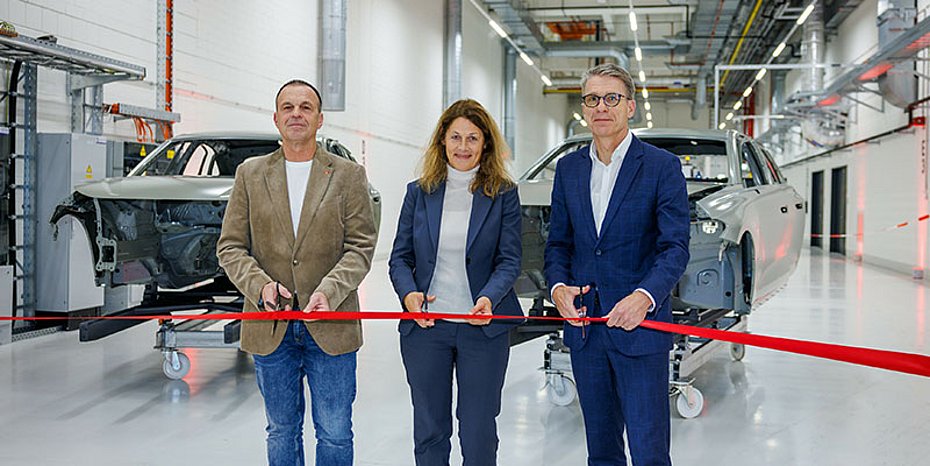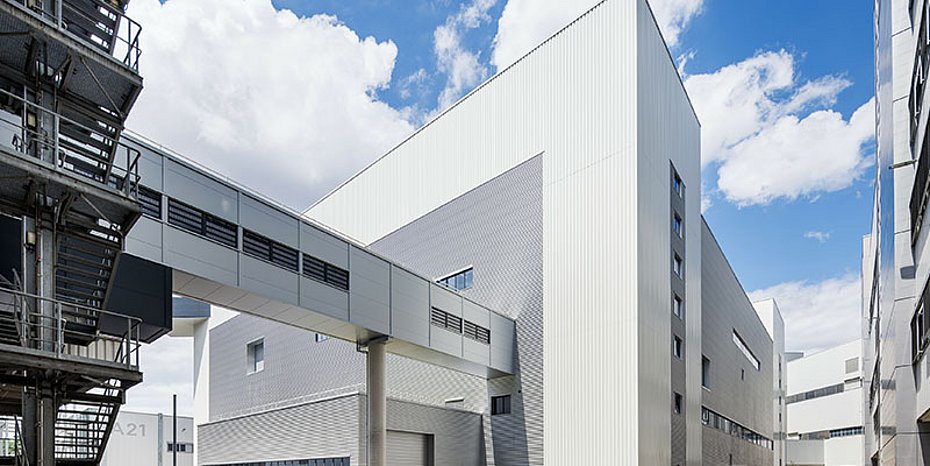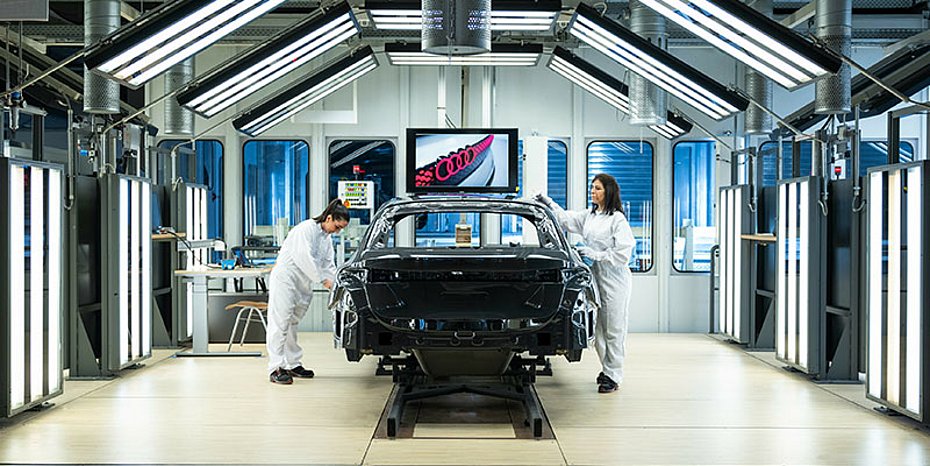Audi celebrated the opening of the new basecoat building at its Neckarsulm plant with more than 200 invited guests. The paint shop sets new standards in the automotive industry with sustainable technologies and processes and is suitable for both combustion engines and electric vehicles. The top coat facility is also currently being restructured until 2025. By renovating the paint shop, Audi AG is making a targeted investment in the site and gearing it towards a sustainable future.
Fully automated paint shop for combustion and electric vehicles
15,000 cubic meters of earth excavated, 2,600 bored piles installed, 1,100 tons of steel used and 13,700 cubic meters of concrete: after two years of construction, the new A22 building with a floor area of 12,000 square meters is complete. The fully automated paint shop primed all models produced at the Neckarsulm site and the neighboring Böllinger Höfe. These include the new Audi A5, the upcoming Audi A7, the Audi Sport models and current and upcoming all-electric models. This is because the plant is designed for both combustion engines and electric vehicles with their special requirements.
Around 200 guests from politics, the press - including the editorial team of Oberfläche-Online - as well as from Audi and its suppliers attended the opening. Fred Schulze, Plant Manager at the Neckarsulm site, said in his speech: "With the investment in the new plant, Audi is setting the course for continuing on the path towards e-mobility and aligning the Neckarsulm site for a sustainable future. The construction project is an important milestone in the plant's development and part of a future-proof infrastructure for production." Rainer Schirmer, Chairman of the Works Council, praises: "With the completely renovated paint shop, we have one of the most advanced facilities in the automotive industry with modern working conditions. This investment underlines our commitment to sustainability and ensures the future viability of our site."
Vehicle corrosion protection without heavy metal
Audi Neckarsulm relies on modern and efficient methods for corrosion protection. In cathodic dip painting, for example, the body is now immersed upside down in the tank and rotated using a new rotation process for Neckarsulm. This is both more space-saving and more thorough, as minimal air bubble formation and dirt deposits can be avoided. A new, more energy-efficient process is also used for drying the cathodic dip coating. Instead of the previous external drying process, a so-called transverse drying process is now used, in which air is blown into the interior and the bodywork is heated from the inside. As well as being more energy-efficient, the cross-dryer is also better suited to future electric and hybrid vehicles with their requirements for longer curing times.
The new thin-film process, a new pre-treatment process that makes the previous phosphating process superfluous, also makes the system more efficient. This new process also eliminates several previously required process steps, such as activation and passivation. In the new process, a 0.2 micrometer-thin layer of zirconium and silicon compounds is applied to the base metal. This layer - only visible with a microscope - serves as corrosion protection on the one hand and as an adhesive base for the subsequently applied primer on the other. From an ecological point of view, the new pre-treatment process offers potential savings in terms of waste, water and energy.
Ursula Noll, Head of Production Planning Paint Shop Corrosion Protection, comments: "The innovative thin-film technology in pre-treatment combined with the new cross-drying process makes a particular contribution to the efficiency and sustainability of the new base coat. This allows us to significantly reduce our electricity and water requirements and make an important overall contribution to our Mission:Zero environmental program."
Energy saving with top coat
The base coat building A22 is connected to the neighboring top coat building by a newly installed bridge. The company has also already restructured the top coat. Audi has achieved energy savings of around 50 kilowatt hours per vehicle there thanks to a new paint separation process using filters instead of water. Previously, the paint mist was collected in water with 100 percent fresh air and then disposed of. In the new dry separation process, it is captured by state-of-the-art filters instead. With this process, more than 90 percent of the filtered process air can be reused. This largely eliminates the need for energy-intensive conditioning of fresh air. At the same time, in contrast to conventional wet separation, the use of fresh water and chemicals is completely eliminated.
Audi has also replaced the so-called filler with a pre-zone paint. The previous separate drying of the filler is no longer necessary, which significantly reduces energy consumption: Up to 140 kilowatt hours can be saved per vehicle. With the new basecoat, Audi Neckarsulm has now reached another important milestone in the restructuring of the entire paint shop. (OM-11/24)
Contact
Audi AG
Auto-Union-Str. 1
85057 Ingolstadt (Germany)
Phone: +49 (0)841 89-0
www.audi.com
About Audi Neckarsulm
The Audi Group is one of the most successful manufacturers of cars and motorcycles in the premium and luxury segment. Cars have been produced at the Audi site in Neckarsulm for over 100 years. The site has developed from a plant for knitting machines into a modern automobile production facility. Audi AG is one of the largest job-providing companies in the Heilbronn-Franken economic region, with 15,710 employees working here.





